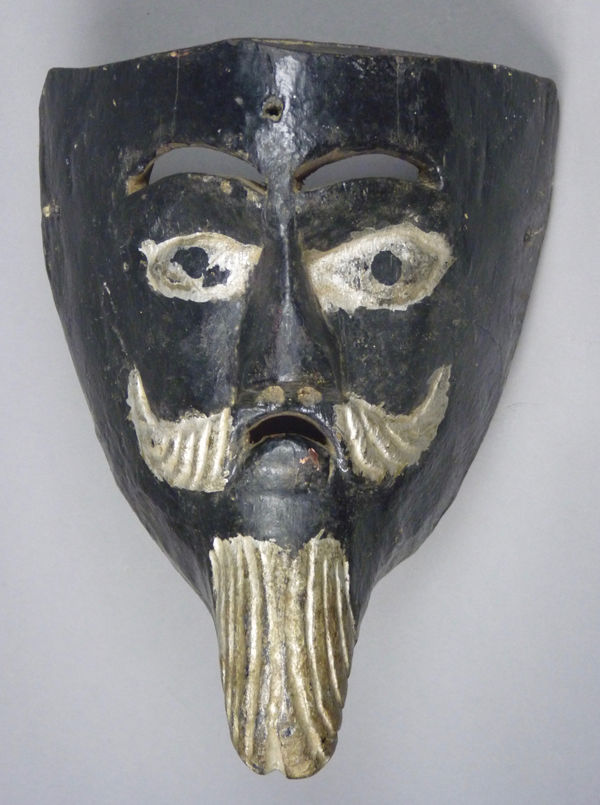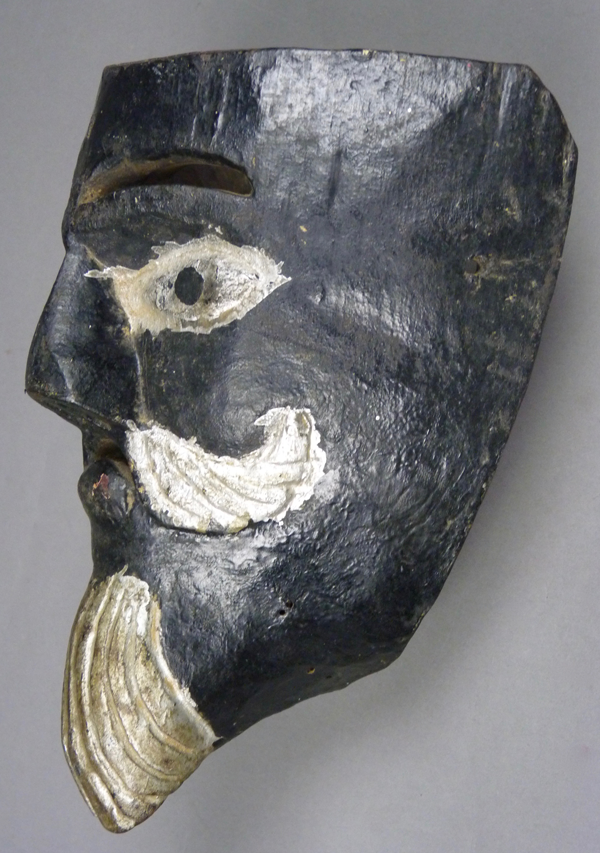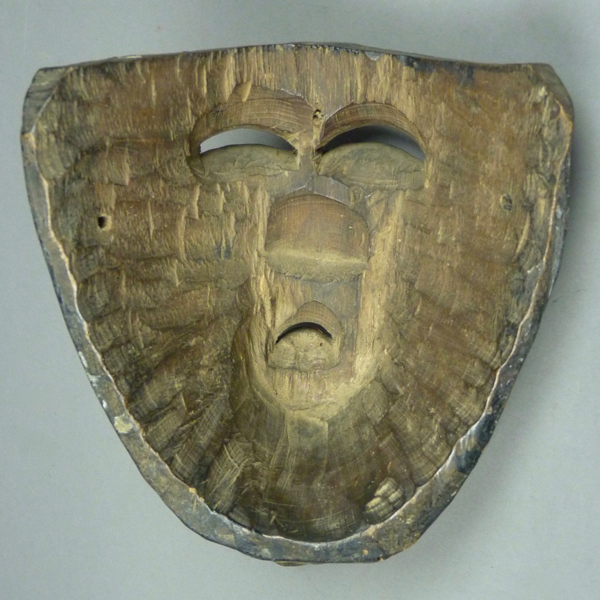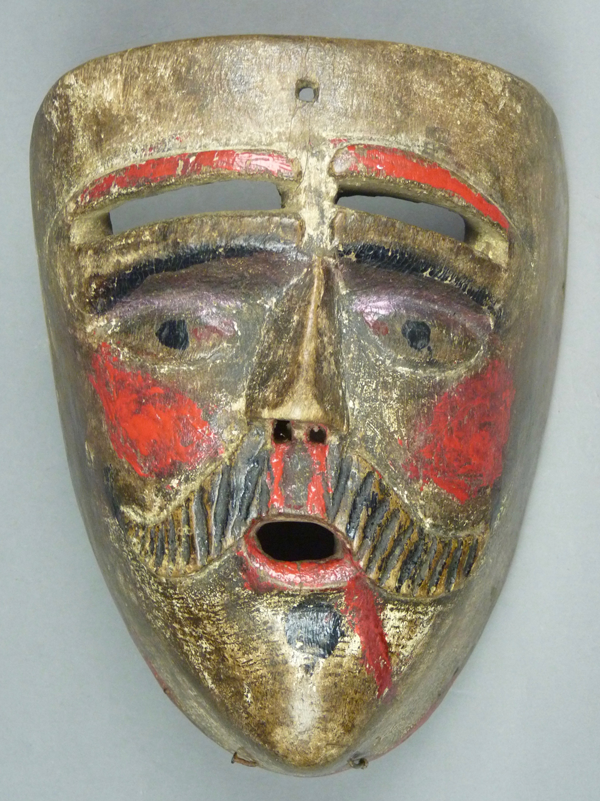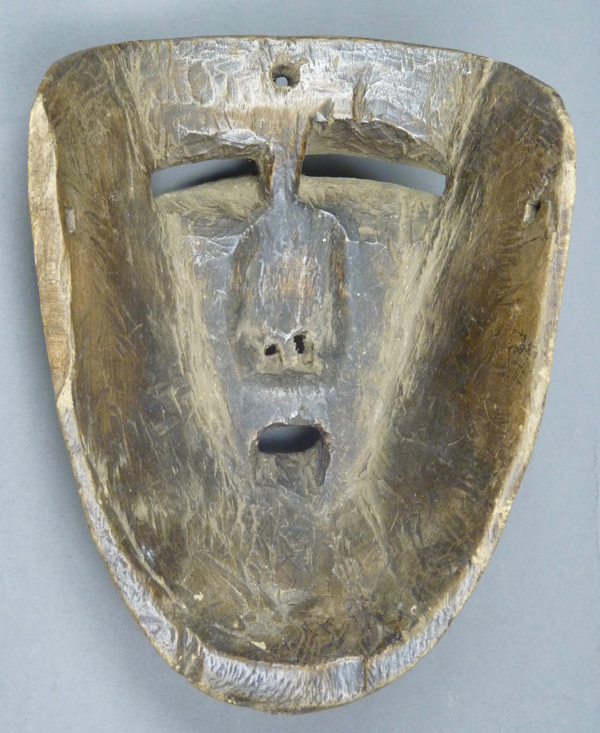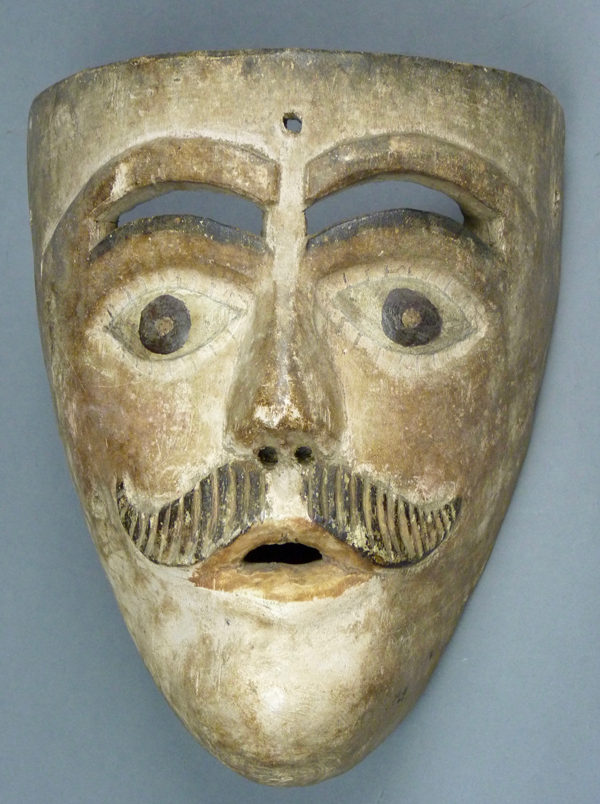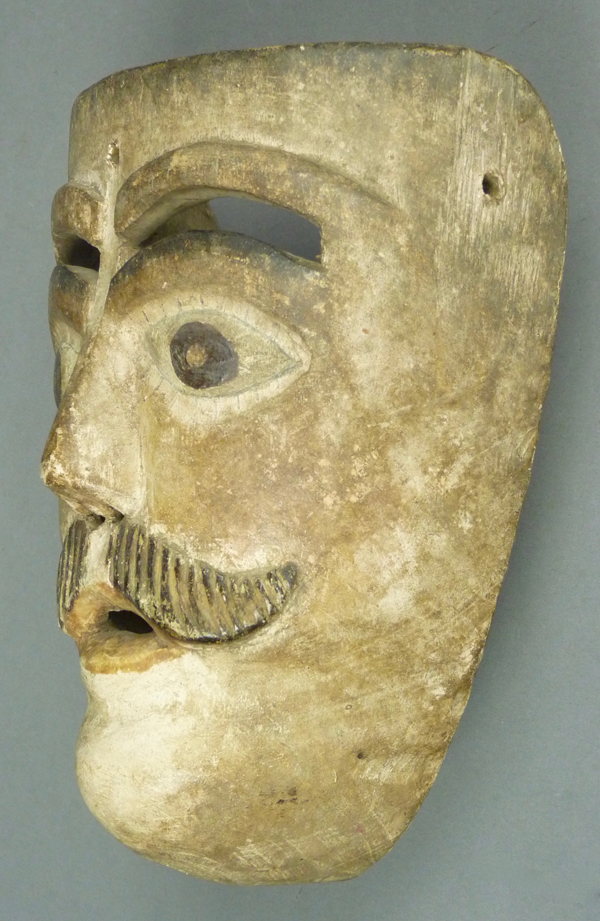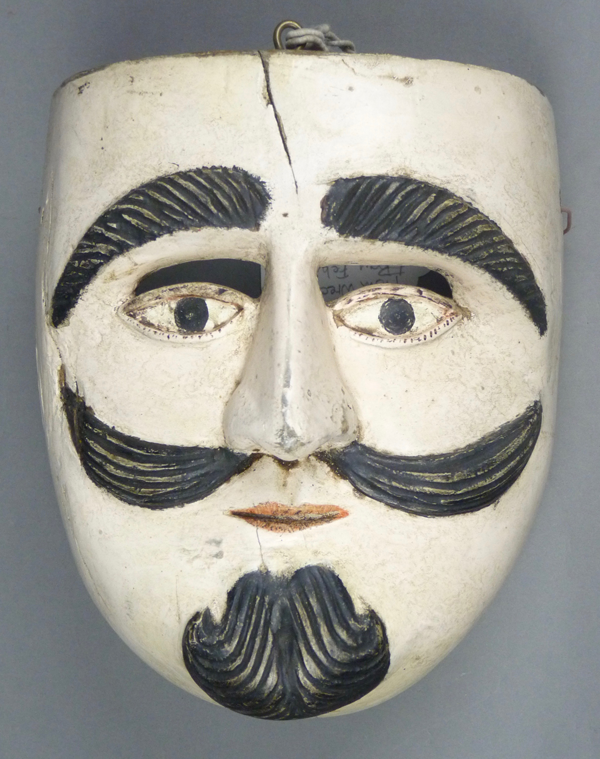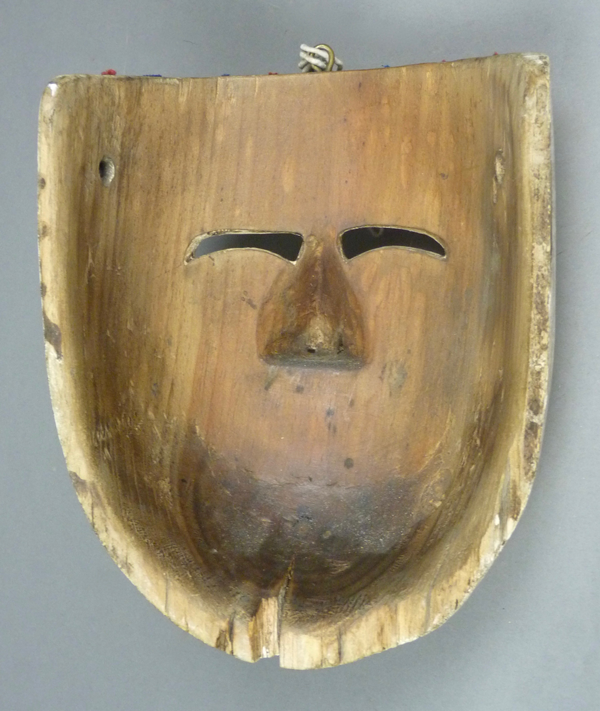Today I will present four Moro masks from the State of Puebla that share similar features, as if all were by the same hand or from the same local tradition.
I don’t believe that I have ever shown you the first of these. I did show you the second in my post of September 15, 2014, along with the third mask, and I featured the fourth in my post of May 18, 2015. The point of today’s post is to put the four side by side. Unfortunately I still do not know the name of the carver(s).
I purchased the first from John Kania and Joe Ferrin of Santa Fe, in 1996. It was said to be from Chichiquila, Puebla. A nearly identical mask in the Museo National de la Máscara:Catálogo (p. 80) is said to be from San Pablito, Municipio Pahuatlán, Puebla.
As we have already seen in earlier posts, sometimes Moors are depicted with black faces—”Blackamoors.” The literal meaning of Blackamoor is “Black African,” but this word would appear to reflect the confusion experienced by Europeans from their early contacts with Africa and its peoples. In contrast, two weeks ago I showed characters from the “Negritos” dance who all had Caucasian faces. As I have repeatedly noted, a common reason for such confusing labels in Mexican dance dramas is that Mexican Indian dancers seldom portray themselves, instead they generally disguise themselves as others; from this place of anonymity and obfuscation the dancers feel free to address otherwise dangerous or forbidden social commentary.
This is quite a handsome and refined mask with its color palette of silver and glossy black.
In profile, this mask displays elegant details. Clumsy repainting obscures the gracefully carved mustache. The goatee is also unusually graceful.
This mask is 9 inches tall, 6½ inches wide, and 3½ inches deep.
The back provides an excellent illustration of heavy staining from use; the hollow areas successfully protected the wearer’s nose from contact with the wood, so there is very little staining there.
The second, a child’s Moro mask, was found on EBay in 2014. I attribute it to Pahuatlán, Puebla, due to its resemblance to the mask that follows.
I believe that this mask has such a dark complexion because the original white paint has worn away with heavy use. Despite its present appearance, this mask was probably originally worn by a Christian figure.
This mask is 7½ inches tall, 5½ inches wide, and 2¾ inches deep.
The back is remarkably stained after many years of being danced.
I purchased the third mask from Jaled Muyaes and Estela Ogazón in March, 2001. Jaled said it was from the dance- El Mysterio de los Negros, a variant of the Moros y Cristianos performance. This Caucasian face was probably worn by a Christian figure. Next week we will examine other masks from dances with this name. This mask is nearly identical to two masks in the Museo National de la Máscara:Catálogo, #260 on page 80 and #262 on page 81. The latter was said to be from the Moros y Cristianos dance in Pahuatlán, Puebla.
Like the last mask, the paint on this one is also heavily worn.
This mask is 7¾ inches tall, 6¼ inches wide, and 3 inches deep.
This mask also demonstrates marked staining from use.
The last, a more recent EBay find, in 2015, was worn by a Cristiano, probably Santiago himself. I attribute it to Atempan, Puebla because it resembles a mask in a dance photo from there, in Moya Rubio’s book, Mascaras La Otra Cara, p. 124. Isn’t this an elegant carving?
The eyebrows, mustache, and goatee are all finely carved in relief. The eyes too are delicately carved.
This mask is 8 inches tall, 6¾ inches wide, and 3¾ inches deep.
The back is heavily stained from use.
Next week I will present three Black-faced Moro masks from other Mexican States that were probably used in “El Mysterio de los Negros.”
Bryan Stevens

